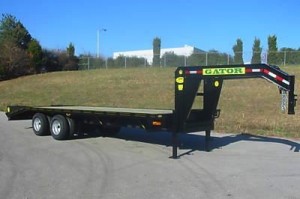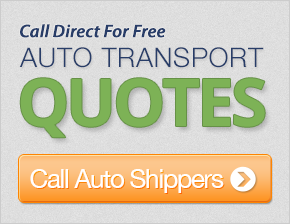Gooseneck Trailers

Gooseneck trailers are typically used to haul certain specific types of cargo, such as race cars, race horses and other livestock. They are often also used by individuals to ship cars, heavy equipment and machinery. A gooseneck trailer’s name is derived from its shape. Such trailers typically have a neck-like protrusion in the front that goes over the rear axle of the vehicle that is pulling it. Goosenecks are considered ideal for hauling heavy loads.
Benefits of a Gooseneck Trailer
Gooseneck trailers are more stable than other types of trailers because the front-end of the trailer almost always goes over the rear axle of the vehicle that is towing it. Often, such trailers are towed by flatbed trucks. In these cases, the front of the trailer is attached to a gooseneck hitch that is installed on the truck bed just above the rear axle. This type of an assembly makes gooseneck trailers somewhat easier and more secure to tow compared to other types of trailers. Goosenecks, for instance, have a much tighter turning radius compared to trailers that are attached to the rear of the towing vehicle. The manner in which a gooseneck trailer is secured to the towing vehicle also allows for heavier loads to be towed.
Goosenecks Come in Different Configurations
If you are looking for a gooseneck trailer to haul livestock, a car or other cargo, you will have plenty of options to choose from. Gooseneck trailers come in a variety of lengths and widths, and can either be open car hauler trailers or fully enclosed trailers. A typical, enclosed car or livestock trailer will have dimensions ranging from 20’ to 40’ in length, a width of around 9 feet, and a height of about 7 feet. Many enclosed trailers have a power-assisted rear ramp for easy loading and unloading. Some trailers may also have a curbside camper door for added convenience.
Goosenecks also are available as flatbeds and as open trailers for carrying equipment and cars. A typical open, gooseneck two-car trailer, for instance, has a rigid frame featuring aluminum floor runners that are at least 22 inches wide, an open center and slide-in loading ramps for loading and unloading. Trailers that are used to tow machinery or equipment, such as landscape utilities, will usually feature side and rear fenders, a fixed front deck and a tilting rear deck. Some goosenecks are designed to be easily detachable, while others have more permanent installations.
Factors to Consider When Using a Gooseneck Trailer
Gooseneck trailers are often easier to tow and are more stable than other types of bumper-attached trailers. However, if you are planning on using one, there are some things you need to keep in mind.
- Goosenecks are harder to install than other types of trailers. A gooseneck hitch needs to be physically installed in the truck bed of the towing vehicle. Often, the truck bed will need to be removed to install the hitch frame. In most cases, you will also need to drill a hole in your truck bed to install the trailer hitch.
- A gooseneck trailer is somewhat irregularly shaped. That means you need to be careful about the weight of the load you plan on towing. Your truck or towing vehicle needs to be able to handle the load, or else your vehicle could be damaged.
- Gooseneck trailers are somewhat harder to rent compared to other kinds of trailers. Many auto transport companies and auto rental firms do not rent these trailers. You can, however, easily purchase a new or a used one at prices starting at just over $2,500. Even if you find a company that offers gooseneck rentals, your towing vehicle needs to have a hitch in order to tow the trailer.
Gooseneck trailers are an ideal choice in a wide variety of situations so long as you are willing to put in a little extra work upfront to install the trailer to your towing vehicle.


